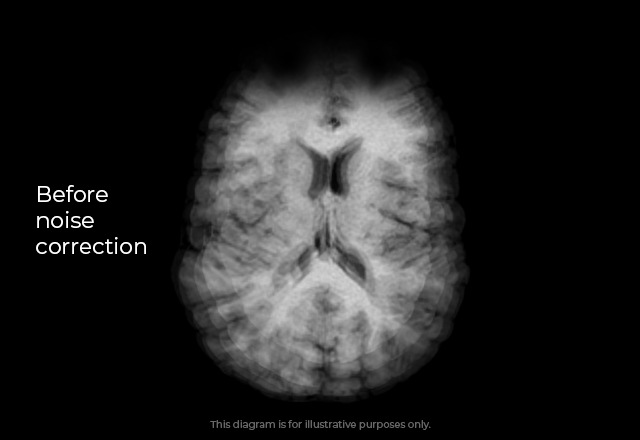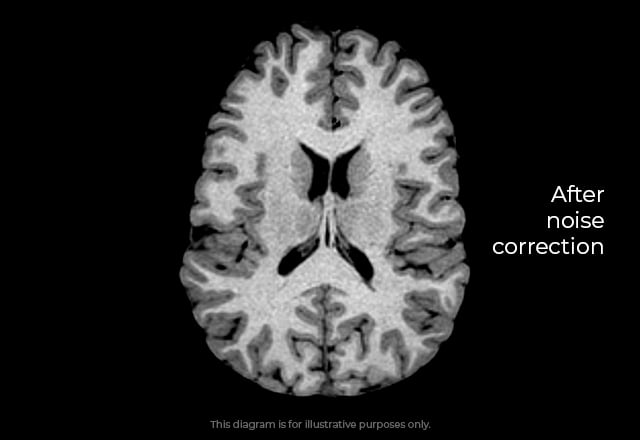
Dive Deeper
Raw MRI scans undergo a series of steps that correct for noise including gradient distortion correction and subject motion correction.


With state-of-the-art algorithms, Quicktome automatically eliminates the need for manual tuning in areas of freewater such as edema.
1. Tournier, J. D., Yeh, C. H., Calamante, F., Cho, K. H., Connelly, A., & Lin, C. P. (2008). Resolving crossing fibres using constrained spherical deconvolution: validation using diffusion-weighted imaging phantom data. NeuroImage, 42(2), 617–625. https://doi.org/10.1016/j.neuroimage.2008.05.002
2. Farquharson S, Tournier JD, Calamante F, et al. White matter fiber tractography: why we need to move beyond DTI. J Neurosurg. 2013;118(6):1367‐1377. doi:10.3171/2013.2.JNS121294
3. Alessandro Arrigo, M. D., & Mormina, E. (2016). Diffusion MRI of Human Brain: Key Points and Innovations.
4. Doyen, S., Nicholas, P., Poologaindran, A., Crawford, L., Young, I. M., Romero-Garcia, R., & Sughrue, M. E. (2021). Connectivity-based parcellation of normal and anatomically distorted human cerebral cortex. Human Brain Mapping, 1– 12. https://doi.org/10.1002/hbm.25728
Copyright © 2021 Omniscient Neurotechnology Pty. All rights reserved.